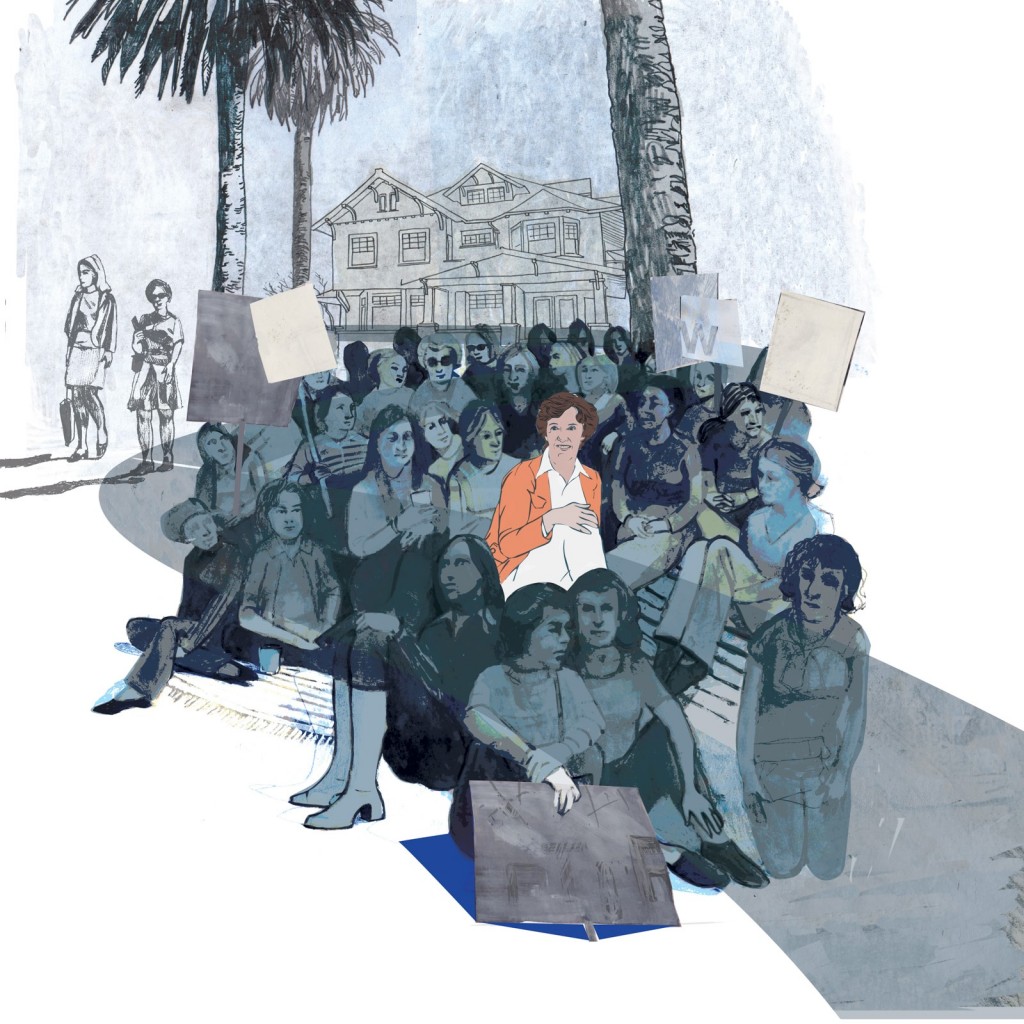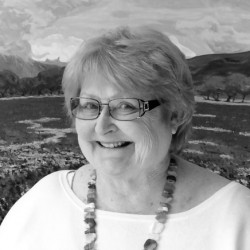
Beth is 48, a Fuller alumna, and ordained as a “Minister of the Word and Sacrament” in the Presbyterian Church (USA). Her first clergy position was as associate pastor in an aging evangelical congregation, responsible for “congregational care and small groups.” It may turn out to be her only clergy position. She loves the Lord, loves being in ministry, and has passion and gifts for preaching, innovative outreach, and leadership. She finds herself with limited opportunities to use these gifts as fully as she feels called and able to do. Recent financial cutbacks may result in the loss of her full-time position. With some hesitation, she has been ready for several years to follow the example of many of her male seminary colleagues to become the solo or senior pastor of a mid-sized or large church, but no doors have opened for her, even after an avid search. She can move to part-time or “sideways” roles but is unlikely to move “up,” even though a few more women are beginning to do so than in the past. Her pluralistic denomination is splitting apart and she finds herself torn, too. Like many other Christian women she has discovered that along with the joys of ministry, it can be surprisingly difficult to overcome traditional views and patterns of church life that limit a woman’s impact, influence, and opportunity for service in the cause of Christ.1
Women like Beth sometimes describe themselves as “stuck in place,” or “all dressed up with nowhere to go,” with no idea what to do next. “I want to keep growing and keep serving the Lord but there are so many obstacles in the way. Is there any future for me in the church?” Other gifted Christian women cannot even find an entrance point.
Over the last five decades, I have met thousands of women serving God with joy, out of a deep love for Christ, and making important contributions to Christian churches, organizations, and global ministries. They are impressive in their creativity, giftedness, and commitment. I meet amazing women leaders in places all over this country as well as in places like China, Peru, Cambodia, Ethiopia, the Philippines, South Korea, and Colombia who are living signs of the kingdom of God. I also have examined some of the available research on women clergy in American churches, and am repeatedly sobered by how many women must struggle and overcome difficulties as they serve within the body of Christ, simply because they are female.
Though their contexts, denominations, cultures, and particular circumstances vary greatly, ecumenical and evangelical Christian women continue to face external and internal barriers to full participation in ministry.2 Traditional gender assumptions, opposing biblical paradigms, changing cultural dynamics, denominational battles, the rise of megachurches, and lack of advocacy from supportive men interlock and combine to limit ministry opportunities even for women in denominations officially supportive of women as clergy.
I think of these challenges as “sticky floors” and “cracked stained glass ceilings.”3 I define sticky floors as social circumstances and attitudes that hold women in supportive, secondary, or circumscribed positions with few opportunities for spiritually healthy growth and formal leadership opportunities. Injustice is also a sticky floor.
Silence in the face of injustice can leave women with little hope and few options. “Sticky floors” describes patterns and habits that showcase or promote “men only” as role models, senior pastors, leaders, or speakers in retreats and conferences, youth groups, denominational meetings, leadership gatherings, and international events. Women can also be hindered by insecurities, inner uncertainties, and negative self-talk that keep them from stepping up or stepping out. They can fear disapproval or be discouraged from taking the risks necessary to venture beyond the safety of familiar roles. Women are in every church and find significance and meaning there. Some women, however, could do much more if they had the freedom and support to do so. There is too much need in the world for women to hold back, or be held back, from making their full contribution to the fulfillment of the missional commands of Christ.
Beth is not alone in the challenges she faces as a woman in ministry. In fact, she is one of the more fortunate ones. She entered seminary at a time of unprecedented change for denominational women seeking to serve Christ as ordained clergy in the local church. Although some fellow students criticized her choice of vocation, she usually received encouragement and support. Unlike women trapped in poverty or in congregations that deny any role for women as preachers, teachers, or leaders outside of children’s or women’s ministries, she has had access to theological education and serves in a mainline denomination that ordains women. Still, the obstacles are real and discouraging.
At the same workshop for Christian women in leadership where I met Beth was Lucinda, an African American woman who works full time in a low wage job to support herself and her family while copastoring a small urban congregation without salary, benefits, or retirement provision. While thousands of gifted women entered the ranks of credentialed or licensed church workers during recent decades, some are in situations like the 3,088 credentialed Pentecostal women in the Church of God, Cleveland. Although between three and four percent of congregations had women pastors, most of the women were bivocational, had planted their own churches rather than being appointed by their male bishops, and were not allowed to serve at all levels of leadership.4 Too many women are paid substantially less than their male peers in similar positions. For example, in many denominations female senior pastors have a $25,000 salary difference below the salaries of senior male pastors.5 They may be promoted less often or experience derogatory or hostile environments including sexual harassment or abuse. Many report great satisfaction in ministry but difficulties remain.
I first entered Fuller Seminary in 1959 as a 20-year-old newly married student wife, grateful and eager to be allowed to audit classes for free. Along with one other wife, I sat in the front row of President and Professor Edward John Carnell’s course on Prolegomena. I found it intellectually and spiritually powerful but for one thing: He opened most class sessions looking over my head to the male students behind, intoning the sentence, “Gentlemen, let us pray.” I felt invisible and silenced. By 1975 it was my turn to stand in front of a class of about 100 male students as their new speech instructor—and the only woman faculty member at Fuller. It was awkward, difficult, and often lonely, but it was also wonderfully challenging and immensely rewarding for a married mother of three. There were only about 70 women students then, mostly studying marriage and family counseling, Christian education, or missions. Meanwhile, faculty, administrators, and trustees were deeply engaged in debate over Paul Jewett’s controversial book Man as Male and Female,6 and I sat in many, many meetings as not a single woman’s voice was sought out or heard.
 “I’ve been really fortunate here at Fuller to work on a chapel team where we wrestle with balancing out the number of women who are part and the minorities who are part and doing our best to do that honestly. That’s been an affirming situation for me and very redeeming. My experiences has been on a spectrum: some of the most painful have come from men who’ve told me I shouldn’t lead worship. I also have the privilege of working with amazing worship leaders, musicians, and artists at Fuller that really support me as a worship leader. That’s something a lot of my friends don’t get to have, and it’s been really edifying for me.”
“I’ve been really fortunate here at Fuller to work on a chapel team where we wrestle with balancing out the number of women who are part and the minorities who are part and doing our best to do that honestly. That’s been an affirming situation for me and very redeeming. My experiences has been on a spectrum: some of the most painful have come from men who’ve told me I shouldn’t lead worship. I also have the privilege of working with amazing worship leaders, musicians, and artists at Fuller that really support me as a worship leader. That’s something a lot of my friends don’t get to have, and it’s been really edifying for me.”
+ Julie Kang [MAICS ’13], chapel assistant and worship leader, on the dynamics of women leading worship, during FULLER magazine’s inaugural “Story Table.” In the mid-1970s, six women at Fuller, imagined above by the many voices they represented, staged a sit-in at the provost’s office in support of a seminary-wide office of women’s concerns. The committee, installed in 1976, welcomed Elizabeth “Libbie” Patterson as its first director. Patterson, also at the recent Story Table, said “I think one of the distinctives of Fuller is that women are viewed as equal to men.”
But things were already beginning to change in dramatic ways for women both in European and American culture and in the global and American church. At Fuller, within a few short years, by the late 1970s and early 1980s, there were more than 700, then more than 1,000, women enrolled—with women faculty in all three schools of theology, psychology, and world mission, with opportunities for women to be ordained as clergy in more than 80 Protestant denominations.7 Denominational decisions often took decades of vigorous study, advocacy, controversial votes, and somewhat ragged paths to acceptance for women as clergy. Looking back, the pace of change seemed slow. From the radical Reformation with the Society of Friends’ (Quakers) acknowledgement of woman’s equality with men,8 the ordination of Congregationalist Antoinette Brown in 1853,9 to the women of the Pentecostal movement with the first ordained woman in the Assemblies of God in 1914,10 roles for women in the church expanded, but in a very limited way. The movement for women as clergy rapidly accelerated in the last quarter of the 20th century and into the 21st century. During the first decade of the 21st century, the number of women serving as solo or senior pastors doubled.11 One example: In 1979, when I was ordained as a Minister of the Word and Sacrament in the Presbyterian Church (USA), I was only the 100th ordained woman, even though female ordination had been approved since 1950. At the time of my own ordination I had never seen nor heard another ordained clergywoman. By 2013, there were more than 4,476 active ordained female clergy in the PCUSA alone, about 36 percent of the total active clergy.12
A Hartford Seminary study found that during the period from 1972 to 1994, female clergy rose from 157 to 712 in the American Baptist Churches, from 94 to 1,394 in the Episcopal Church USA, from 388 to 988 in the Christian Church (Disciples of Christ), from 73 to 1,519 in the Evangelical Lutheran Church in America, from 319 to 3,003 in the United Methodist Church, and was at 2,832 in the UCC in 2002.13 These numbers have grown, although they may be leveling out or even slightly decreasing in recent years. The United Methodists today boast of more than 10,300 active and retired female clergy.14 Even smaller and more conservative denominations like the Church of the Nazarene, Evangelical Covenant, Christian Reformed Church, Wesleyans, Foursquare, and a relatively small number of Southern Baptist congregations ordain women clergy that serve in a wide variety of roles.
Notable African American women leaders include Cynthia L. Hale, the founding and senior pastor of the Ray of Hope Christian Church, who grew an 8,500-member church in Decatur, Georgia, and Pastor Gina Stewart of Christ Missionary Baptist Church in Memphis, who leads a church of more than 4,000 people.15 Pastor Vashti McKinzie became the first woman bishop of the African Methodist Episcopal Church in 2004.16 In 2014 three large historic tall-steeple churches called women as senior pastors—Fourth Presbyterian in Chicago, Riverside Church in New York City, and Foundry United Methodist Church in Washington, DC. Although research is incomplete and reporting systems vary, a Barna report in 2009 estimated that female clergy lead 10 percent of all congregations in America, with 58 percent affiliated with a mainline church.17
These changes have occurred but not without deep polarization and controversy—within congregations and denominations and also within the evangelical movement as a whole. Some saw these changes as positive. Others saw them as disastrous. From my vantage point, within both the evangelical and ecumenical movements an environment of mostly respectful and productive argument, debate, and dialogue began to decline during the mid- and late 1980s. This happened as positions on multiple sides of the issues hardened as accusations of biblical misinterpretation or infidelity, “liberalism,” “the feminization of the church,” and “cultural conformity” flew back and forth.
Though some dialogue around women’s issues has continued in places like the Evangelical Theological Society and on Christian university and seminary campuses, there is more likely to be advocacy, denunciation, or silence. One implication is that new generations entering theological education are unlikely to have heard serious detailed biblical or theological examination of positions other than those held in their home churches.
“Modern debates over the ordination of women often miss the crucial and basic issues of the holistic concept of the ministry of the Church reflected in the New Testament. Of course, no person should be ordained or given any responsibilities of ministry within the Church because of gender or for the sake of a ‘point.’ On the other hand, we have affirmed in the Church that no person, called and gifted by God, should be denied any role of ministry or leadership in the Church because of one’s gender.”
+ David M. Scholer, 1994–2008, was professor of New Testament for 14 years and associate dean for the Center for Advanced Theological Studies at Fuller. He was an articulate and outspoken advocate for women. There is a wealth of information concerning women in ministry, including extensive texts and video interviews with core faculty members, to be found here, framed by beloved past faculty member David M. Scholer. This excerpt, as with much that will be found there, is adapted, with permission, from The Covenant Companion issues from December 1, 1983, December 15, 1983, January 1984, and February 1984.
As a strong supporter of both women and men in ministry I am personally encouraged by the large numbers of women clergy. Numbers alone, however, no matter how impressive, do not begin to tell the whole story around women and ministry. With all the good things that have happened, there are still enormous challenges. I have traveled widely in more than 90 countries, visited hundreds of communities of extreme poverty, and have spoken frequently at Christian leadership and pastors’ conferences and at denominational and interdenominational meetings in the United States, Latin America, Eastern and Southern Africa, Europe, and Asia. Each of these contexts and cultures has unique elements, often hidden from view and difficult for outsiders to grasp, making generalizations dangerous, oversimplistic, and necessarily incomplete. Each person has a story. Each church has a history. Each crisis or instance of struggle or suffering has multiple causes. Christian women do amazing things all over the world, but way too many are stuck on a very sticky floor that holds them firmly in place, even as others are straining to break through the cracks of a stained glass ceiling.
Poverty is a “sticky floor” that holds many women captive.18 I have visited women and girls who have been so victimized and brutalized by violence and war that I have been sorely tempted to despair. I have walked among groups of women literally starving to death with severely malnourished infants vainly trying to nurse at sagging empty breasts. I have held hands with stigmatized women dying of AIDS who had been sexually faithful to their husbands and fathers of their children yet would leave their children orphaned and struggling to survive. I have also seen remarkable, talented, awe-inspiring women serving, with every resource at their disposal, those so desperately in need, all in the name of Christ. I have prayed with women leaders of “meeting point” or house churches in China who were among the builders of a Christian movement that now includes over 80 million Chinese Christians. Pentecostal women evangelists in Latin America have inspired me with their passion for the lost. I have seen their faith, I have seen their courage, I have seen their sacrifice, and I have been deeply moved.
I will never forget a small, barefoot, dirt-encrusted woman with her long dark hair and her head bowed low, sitting on the ground, leaning against a newly constructed rough adobe wall. It was cold in the Andean Quechua village at 12,000 feet, and she was holding tightly onto her tiny baby, securely wrapped in a colorful woven blanket. When the men spoke to me of their plans and strategies for the future, I asked them, “What about the woman?” “What woman?” they answered, almost in unison. “That one, sitting right there,” I answered. They glanced at her very briefly and quickly changed the subject. She was there but they somehow couldn’t see her, couldn’t focus, or take her seriously as they continued their discussion. To them, she was invisible.
I long for the whole church to see every woman as loved by God, called by Christ into life abundant and eternal, and capable by God’s redeeming grace to be filled by the Holy Spirit with gifts that are important to the mission of the church in the world. I genuinely rejoice in the positive changes for women that I have seen and experienced over these years. But there is still a long way to go, and I have some specific concerns for the future. I will express them in the form of questions and tentative partial answers:
- With the relative decline of “mainline” denominations and increasing significance of megachurches—with almost totally male networks of leadership and visibility—where will role models and advocacy for women in ministry be encouraged? Women must find their voices to speak up for their sisters in Christ, but they cannot do it alone. Men who hold power must take active leadership in discipleship, mentoring, encouraging, and advocating for women. They must listen and help.19
- Where church growth is marked by “positive and practical” messages, along with widespread avoidance of controversy, how and when can difficult issues of changing roles for women and men both in church and society be addressed? The church must support marriages and families and, at the same time, address women and men of all ages and stages from a biblical worldview. Sermons, adult seminars, and specific teaching times with opportunities for discussion are important. Christian higher education and theological seminaries have a critical role to play.
- With women holding more and more high-level responsible positions in business, technology, politics, education, and government, what message does the church have for women—who now have an average life span of 81 years? God loves you and has a wonderful plan for the world, and you have a meaningful part to play in it! Go for it!


